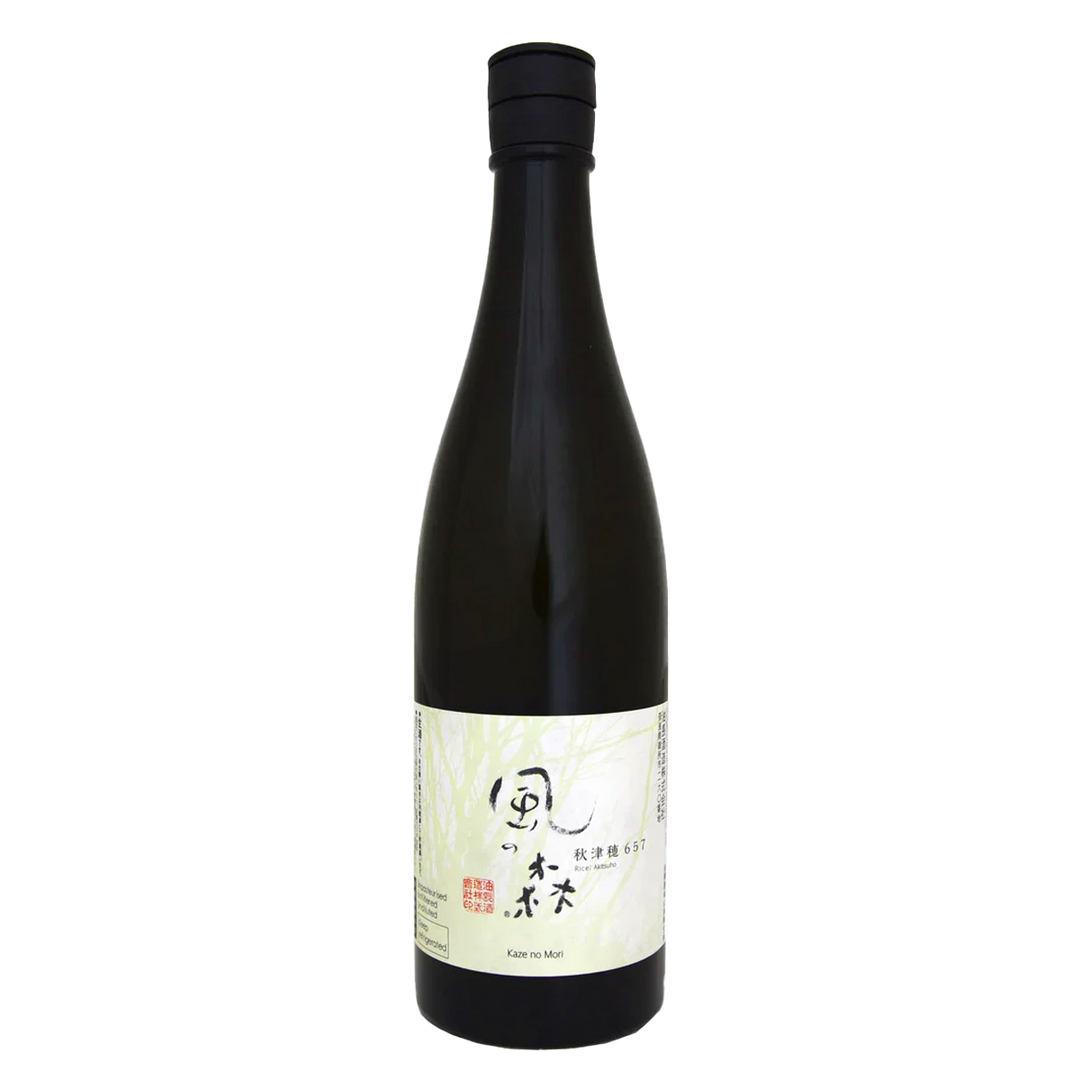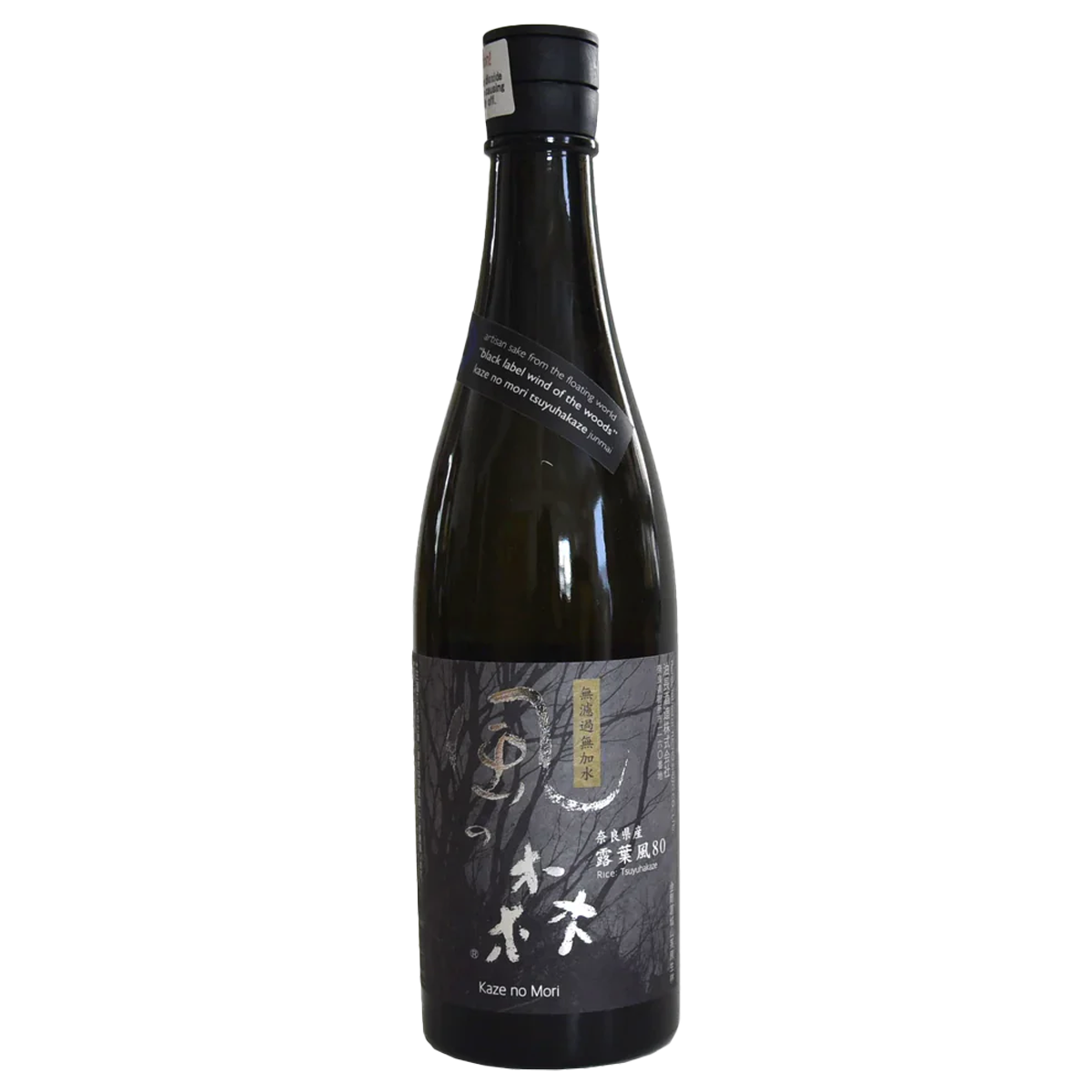
Kaze no Mori "Wind of the Woods" Akitsuho 657 Junmai Muroka Nama Genshu
- In stock, ready to ship
The number one Sunflower Sake bestseller. If someone comes in with no idea what they want to drink...and Kaze no Mori is in stock, it's almost always my top recommendation. Fizzy, well balanced, utterly delightful, and loved by all!
Tasting notes
Bright, fantastic, fizzy melon, sweet green herbs, mint, nectarine, lime zest, fruit loops, rainier cherry, Jordan almonds, and strawberry daifuku mochi. Truly, if Ramune soda were a sake-- this would be it.
On day 1 there is so much fizz that the cap pops off like a Champagne cork, so watch out and aim away from your eyes! From that fizz you'll also get an intense, even searing brightness, that makes it enjoyable most as an aperitif served with equally bright and refreshing food. A few days later, the fizz mellows out and the sake takes on a rounder sort of honeydew melon, mochi, white chocolate character, which still retains its original freshness-- but with a softer side. The softness continues to come out over time and on day 30+ it's generous, fleshy, and a tad creamy.
If you have patience, I recommend a glass on day 1, day 3, day 14 and day 30! Or just have it all on day 1-- you know, whatever's clever.
Recommended serveware
As far as serveware, this is one sake where I really think a white wine glass, Usuhari daiginjo glass, or Champagne flute is your best bet. You can definitely do an ochoko or sakazuki, but if so stick with a thin lip and be prepared to refill your cup a LOT. This sake is dangerously quaffable. It's not for meditation, it's for unadulterated enjoyment.
Prefecture: Nara
Brewery: Yucho Shuzo
Grade: Junmai Muroka Nama Genshu
Rice: Akitsuho (local Nara variety, technically a table rice)
Polish: 65%
Yeast: #7
Kaze no Mori means "wind of the woods" and is a regionality-driven, fresh and expressive line of sake introduced in 1998 by the 12th generation of Yucho Shuzo, Chobei Yamamoto. Releases are numbered (this is 657), and those numbers correspond to the variety of rice and yeast used in production (in this case, Akitsuho 65 & Yeast #7). Yucho Shuzo has been making sake and shochu since 1719, primarily under their first brand, Takacho (see: Takacho Regal Hawk) but faced a huge drop in demand during the 80s, forcing the brewery to reconsider its approach. At a small retail event in the 1990s Chobei tested a theory, and poured fresh-from-the-tap, unpasteurized, undiluted Takacho for guests. He knew that this ephemeral, fresh-pressed sake was one of the most delicious experiences you can have in a brewery, and at the event it was received with great enthusiasm, providing the impetus for his new Kaze no Mori brand. The improvements in refrigerated shipping that had taken place during the same era opened the door logistically to an otherwise unstable product.
Kaze no Mori is a divergence from traditional sake: younger, wilder, with signature flavors of melon and mint, intending to deliver the "straight from the press" experience to sake drinkers. The name "Kaze no Mori" refers to the wind that soars through the city of Gose in Nara Prefecture, home to the Kaze no Mori shrine which sits at the top of a local mountain pass. It also suggests freshness and new movement, which are integral to the brand's concept. The rice that grows at the top of this mountain pass is called Akitsuho, and it is the heart of both Gose and the Kaze no Mori brand.
Since 1998, Chobei and his son Yoshihiko have adapted daiginjo brewing techniques to the Kaze no Mori line, lending daiginjo-level aromatics, while low-polish Akitsuho table rice (polished to 65%) lends astringent complexity, depth, and richness. The brewery utilizes a gravity flow system rather than pumps so that natural carbonation, flavor, and aroma are retained in the sake. The sake is filtered with a proprietary technology, a submerged press in the vat, in order to limit the liquid's movement. In addition, their custom bottling line (one of 2 in Japan) adjusts the level of the spout to the height of the liquid as it fills the bottle.
Achieving "just from the press" freshness when we open a bottle here in Portland, thousands of miles away from its origin in Nara prefecture, has been a technical feat and is a multi-generational process of refinement. Yoshihiko says, "This kind of product really is alive. Open it and it's like a flower. For the consumer to enjoy it at a meal while it's in the glory of its bloom, we have to make sure that it stays in bud, so to speak, during our production phases at the brewery and during transport." There is no other sake quite like it, and this evolution-- the blossoming which takes place right in front of your eyes-- is such a huge part of what makes Kaze no Mori special, and why I recommend appreciating its evolution at home.
But Yoshihiko insists this regionally inspired product is not a representation of terroir. "At its root, terroir has no relationship with the production process. The term was used in the wine world to describe the special characteristics of grapes depending on where and how they're grown. With sake, you have a process whereby you use the koji to convert the starches from rice into fermentable sugars....terroir just doesn't do any justice to the path we've taken here in Nara." Out of respect for Yoshihiko, I call this sake regionally representative. It inspires the spirit of Gose through its rice, its freshness and verve, and in being imbued with the wind-like essence of the Kaze no Mori pass.
I hope my verbosity conveys my passion for this sake. It's not here all the time, and has been missing now for months, but when it is in-- it's fabulous.
70.71 YPR



